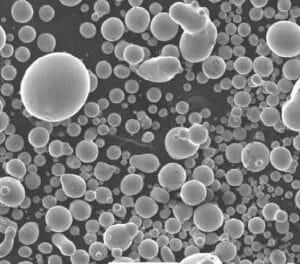Spherical Iron Based Powder
Introduction
Spherical Iron Based Powder is a high-performance metal powder designed for additive manufacturing (AM), thermal spraying, and powder metallurgy applications. Unlike irregularly shaped powders, its spherical morphology ensures excellent flowability, packing density, and uniform layer deposition—qualities that are critical in 3D printing and surface coating technologies. With controlled particle size distribution and high purity, this powder delivers consistent results in both research and industrial production.
Detailed Description
Produced through advanced atomization processes (such as gas atomization or plasma atomization), spherical iron-based powders exhibit smooth surfaces and excellent sphericity. This makes them highly suitable for selective laser melting (SLM), electron beam melting (EBM), and direct energy deposition (DED).
Key features include:
Spherical Morphology – improves flowability and minimizes defects during powder spreading.
High Packing Density – ensures strong inter-particle bonding and dense final products.
Customizable Particle Size Distribution – typically 15–45 μm for AM, 45–105 μm for thermal spray.
Good Sintering Behavior – stable performance in powder metallurgy processes.
Alloy Flexibility – available in various iron-based compositions (Fe–Ni, Fe–Cr, Fe–Co, etc.) depending on application needs.
Applications
Spherical Iron Based Powders are widely used in:
Additive Manufacturing (3D Printing) – fabrication of structural parts with high mechanical strength.
Powder Metallurgy – sintered components in automotive, aerospace, and machinery.
Thermal Spraying – wear-resistant and corrosion-resistant coatings.
Magnetic Materials – production of soft magnetic composites and cores.
R&D – prototyping and material science studies involving iron alloys.
Technical Parameters
| Parameter | Typical Value / Range | Importance |
|---|---|---|
| Purity | ≥ 99% (custom alloys available) | Ensures minimal contamination |
| Particle Size | 15–45 μm (AM), 45–105 μm (spray) | Matches different processing needs |
| Morphology | Spherical, smooth surface | Improves flowability |
| Apparent Density | 3.5 – 4.5 g/cm³ | Supports high-density builds |
| Oxygen Content | ≤ 0.05% | Critical for mechanical strength |
Comparison with Related Powders
| Material | Key Advantage | Typical Application |
|---|---|---|
| Spherical Iron Based Powder | Cost-effective, versatile | AM, coatings, PM parts |
| Stainless Steel Powder | Corrosion resistance | Medical, aerospace |
| Nickel Based Powder | High temp strength | Turbines, aerospace |
| Cobalt Based Powder | Wear resistance | Cutting tools, coatings |
FAQ
| Question | Answer |
|---|---|
| What production method is used? | Gas or plasma atomization ensures high sphericity and purity. |
| Can the particle size be customized? | Yes, size ranges can be tailored to specific applications. |
| Is this powder suitable for 3D printing? | Yes, 15–45 μm grades are optimized for SLM/EBM systems. |
| How is it packaged? | Vacuum-sealed, moisture-proof bags with protective cartons or steel drums. |
| Which industries use it most? | Aerospace, automotive, energy, additive manufacturing, and R&D. |
Packaging
Each batch of Spherical Iron Based Powder is vacuum-sealed in anti-static, moisture-proof packaging. For bulk orders, powders are shipped in lined steel drums with external labeling to ensure traceability and safety during transportation.
Conclusion
Spherical Iron Based Powder offers excellent flowability, high purity, and strong performance across additive manufacturing, thermal spraying, and powder metallurgy. Its versatility and cost-effectiveness make it an essential raw material for industries developing next-generation components.
For detailed specifications and a quotation, please contact us at [sales@thinfilmmaterials.com].





Reviews
There are no reviews yet.